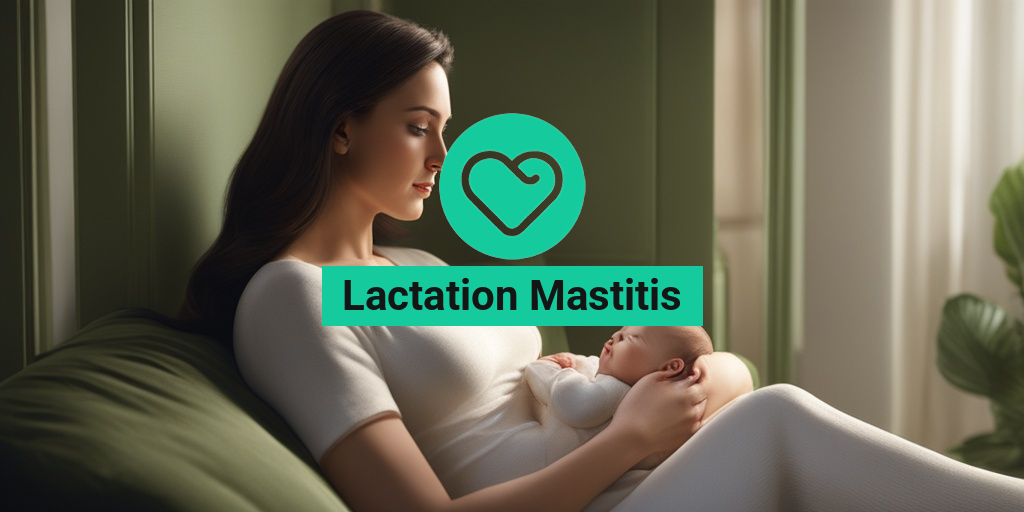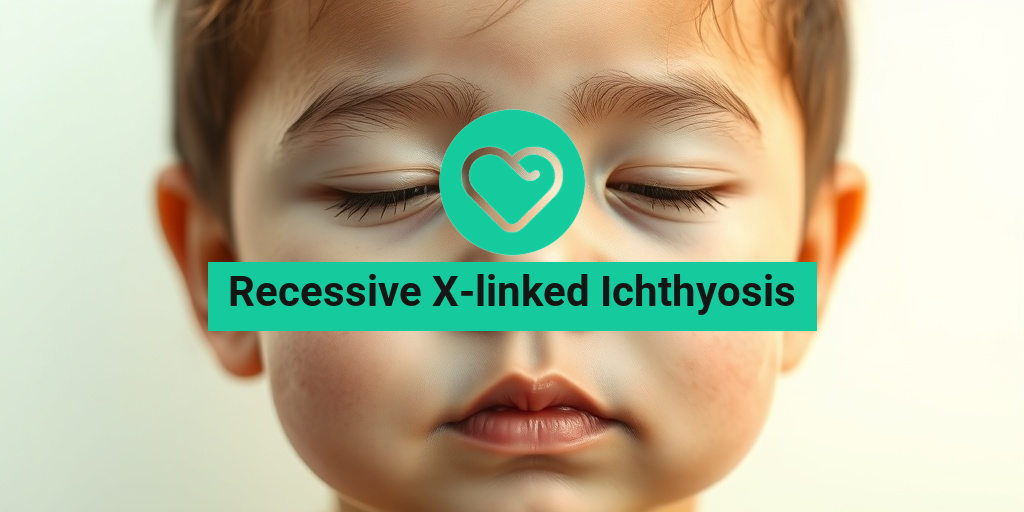What Is Lactation Mastitis?
Lactation mastitis is a common condition that affects many breastfeeding mothers. It’s a painful and uncomfortable experience that can be frustrating, especially when you’re trying to care for your newborn. But what exactly is lactation mastitis, and how does it occur?
Definition and Causes
Lactation mastitis is an inflammation of the breast tissue that occurs when milk ducts become blocked, causing milk to stagnate and lead to infection. This can happen due to various reasons, including:
- Improper latching: When the baby doesn’t latch correctly, it can cause milk to accumulate in the ducts, leading to blockages.
- Inadequate milk removal: If the breast is not emptied regularly, milk can stagnate, causing inflammation.
- Breast engorgement: When the breast becomes overly full, it can put pressure on the ducts, leading to blockages.
- Bacterial infection: Bacteria can enter the breast through cracked nipples or other openings, causing infection.
It’s essential to understand that lactation mastitis is not a sign of poor breastfeeding or a reflection of your ability as a mother. It’s a common issue that can happen to anyone, and with proper treatment, you can overcome it.
Lactation Mastitis Symptoms
Recognizing the symptoms of lactation mastitis is crucial to seeking timely treatment and preventing further complications. Some common symptoms include:
Pain and Discomfort
One of the most noticeable symptoms of lactation mastitis is breast pain or tenderness. You may experience:
- Breast tenderness or swelling
- Sharp, stabbing pains in the breast or nipple area
- Breast warmth or redness
Other Symptoms
In addition to breast pain, you may experience:
- Fever (usually mild)
- Chills
- Fatigue
- General feeling of being unwell
If you’re experiencing any of these symptoms, it’s essential to seek medical attention to rule out any underlying infections or complications. Remember, lactation mastitis is treatable, and with proper care, you can overcome it and continue to breastfeed your baby successfully.
🤱♀️ Stay tuned for the next part of this series, where we’ll discuss lactation mastitis treatment options and home remedies! 💊

Causes of Lactation Mastitis
Lactation mastitis is a painful and frustrating condition that affects many breastfeeding mothers. But what causes this uncomfortable and often debilitating condition? Let’s dive into the common causes of lactation mastitis.
Blocked Milk Ducts
One of the most common causes of lactation mastitis is a blocked milk duct. This occurs when milk flow is obstructed, causing milk to back up and lead to inflammation and infection. Blocked ducts can be caused by:
- Improper latching or poor breastfeeding technique
- Inadequate milk removal
- Wearing a bra that’s too tight or constricting
- Using a breast pump that doesn’t fit properly
Bacterial Infection
Bacterial infections, particularly Staphylococcus aureus, can cause lactation mastitis. Bacteria can enter the breast through cracked nipples or broken skin, leading to infection.
Hormonal Changes
Hormonal fluctuations during the postpartum period can also contribute to lactation mastitis. Changes in estrogen and progesterone levels can affect milk production and flow, leading to ductal blockages and inflammation.
Risk Factors for Developing Lactation Mastitis
While lactation mastitis can affect any breastfeeding mother, some women are more prone to developing the condition. Let’s explore the risk factors that increase the likelihood of developing lactation mastitis.
First-Time Mothers
First-time mothers are more likely to experience lactation mastitis due to inexperience with breastfeeding and potential difficulties with latching and milk removal.
Previous History of Mastitis
Mothers who have experienced lactation mastitis in the past are more likely to develop it again in subsequent breastfeeding experiences.
Engorgement
Mothers who experience severe engorgement are more likely to develop lactation mastitis, as engorgement can lead to blocked ducts and increased risk of infection.
By understanding the causes and risk factors of lactation mastitis, breastfeeding mothers can take proactive steps to prevent this painful condition and ensure a healthy and successful breastfeeding journey 🤱♀️.

Diagnosing Lactation Mastitis
As a breastfeeding mother, the last thing you want to deal with is a painful and uncomfortable condition like lactation mastitis. But, unfortunately, it’s a common issue that affects many women. So, how do you know if you have lactation mastitis, and what are the signs and symptoms to look out for?
What are the signs and symptoms of lactation mastitis?
Lactation mastitis can manifest in different ways, but common signs and symptoms include:
- Fever: A temperature above 100.4°F (38°C) is a common indicator of lactation mastitis.
- Breast pain: Pain or tenderness in the breast, which can be severe and radiate to the arm or shoulder.
- Swollen or engorged breasts: Breasts may become swollen, hard, or lumpy, making it difficult to express milk.
- Redness and warmth: The affected breast may become red, warm, or tender to the touch.
- Fatigue: Feeling exhausted or weak, which can be exacerbated by the discomfort and pain.
- Chills: Some women may experience chills or feel cold, even if they have a fever.
If you’re experiencing any of these symptoms, it’s essential to consult with a healthcare provider or a lactation consultant for a proper diagnosis. They may perform a physical examination, take a medical history, and possibly conduct a breast examination or ultrasound to rule out other conditions.
What causes lactation mastitis?
Lactation mastitis can occur due to various reasons, including:
- Blocked ducts: When milk ducts become blocked, it can lead to inflammation and infection.
- Improper latching: If the baby is not latching correctly, it can cause nipple trauma and increase the risk of mastitis.
- Over- or under-expression of milk: Not expressing enough milk or expressing too much can lead to engorgement and mastitis.
- Bacterial infection: Bacteria like Staphylococcus aureus can cause mastitis, especially if there’s a crack or fissure in the nipple.
Understanding the causes of lactation mastitis can help you take preventive measures to avoid it or identify the root cause if you’re already experiencing symptoms.
Treatment Options for Lactation Mastitis
If you’ve been diagnosed with lactation mastitis, don’t worry – there are various treatment options available to help you recover and continue breastfeeding successfully.
Home Remedies and Self-Care
In addition to medical treatment, there are some home remedies and self-care practices that can help alleviate symptoms:
- Apply heat or cold: Applying a warm compress or a cold pack to the affected breast can help reduce pain and discomfort.
- Rest and relaxation: Getting plenty of rest and practicing relaxation techniques, such as deep breathing or meditation, can help reduce stress and promote healing.
- Stay hydrated: Drinking plenty of water and staying hydrated can help flush out toxins and support the healing process.
- Frequent feeding or expression: Frequent feeding or expressing milk can help relieve engorgement and reduce the risk of mastitis.
It’s essential to consult with a healthcare provider or lactation consultant to determine the best course of treatment for your specific situation. They may recommend antibiotics, pain relief medication, or other treatments to help you recover from lactation mastitis.
Remember, lactation mastitis is a common condition that can be treated and managed with the right support and care. Don’t hesitate to reach out for help if you’re experiencing symptoms – you don’t have to suffer in silence! 🤱♀️💕

Home Remedies for Lactation Mastitis
As a breastfeeding mother, dealing with lactation mastitis can be a frustrating and painful experience. While it’s essential to consult with a healthcare professional for proper diagnosis and treatment, there are some home remedies that can help alleviate the symptoms and promote healing. 🤕
Warm Compresses
A warm compress can help reduce pain and inflammation in the affected breast. Soak a clean cloth in warm water, wring it out, and apply it to the breast for 10-15 minutes. Repeat this process several times a day to help relieve discomfort and promote milk flow. ❄️
Cold Compresses
On the other hand, a cold compress can help reduce swelling and ease pain. Wrap an ice pack or a bag of frozen peas in a cloth and apply it to the breast for 10-15 minutes. This can be especially helpful in reducing inflammation and discomfort. ❄️
Rest and Relaxation
Getting plenty of rest and relaxation is crucial in helping your body recover from lactation mastitis. Aim for 8-10 hours of sleep per night and take breaks throughout the day to rest and recharge. This can help your body fight off the infection and promote healing. 😴
Frequent Feeding
Frequent feeding can help to remove milk from the breast, reducing the risk of engorgement and promoting healing. Try to feed your baby frequently, especially during the first few days of symptoms. This can help to alleviate discomfort and promote milk flow. 🍼
Proper Latch and Positioning
Ensuring a proper latch and positioning during feeding can help to prevent lactation mastitis. Make sure your baby is latched on correctly, and the breast is drained properly during feeding. This can help to reduce the risk of engorgement and promote healing. 👶
Preventing Lactation Mastitis While Breastfeeding
Lactation mastitis can be a frustrating and painful experience for breastfeeding mothers. However, there are several steps you can take to reduce the risk of developing lactation mastitis. 🤕
Proper Breastfeeding Technique
Ensuring a proper latch and positioning during feeding can help to prevent lactation mastitis. Make sure your baby is latched on correctly, and the breast is drained properly during feeding. This can help to reduce the risk of engorgement and promote healing. 👶
Frequent Feeding
Frequent feeding can help to remove milk from the breast, reducing the risk of engorgement and promoting healing. Try to feed your baby frequently, especially during the first few days of breastfeeding. This can help to alleviate discomfort and promote milk flow. 🍼
Proper Breast Care
Proper breast care is essential in preventing lactation mastitis. Make sure to wash your hands before feeding, and clean the breast and nipple area regularly. This can help to reduce the risk of bacterial infection and promote healing. 🚿
Avoiding Engorgement
Engorgement can increase the risk of lactation mastitis. To avoid engorgement, try to feed your baby frequently, and express milk regularly if you’re unable to feed. This can help to reduce the risk of engorgement and promote healing. 🤯
By following these home remedies and prevention tips, you can reduce the risk of lactation mastitis and promote a healthy and comfortable breastfeeding experience. Remember to always consult with a healthcare professional for proper diagnosis and treatment. 💊

Frequently Asked Questions about Lactation Mastitis
What is Lactation Mastitis?
Lactation mastitis is a painful breast infection that occurs in breastfeeding women. It is usually caused by a bacterial infection, and symptoms include breast tenderness, swelling, redness, and warmth.
What are the Causes of Lactation Mastitis?
Lactation mastitis can be caused by a variety of factors, including poor latch, infrequent or incomplete emptying of the breast, nipple trauma, and bacterial contamination.
What are the Signs and Symptoms of Lactation Mastitis?
The signs and symptoms of lactation mastitis may include breast tenderness, swelling, redness, warmth, and flu-like symptoms such as fever and fatigue.
How is Lactation Mastitis Diagnosed?
Lactation mastitis is typically diagnosed through a physical examination and medical history. In some cases, a breast ultrasound or mammogram may be ordered to rule out other conditions.
What is the Treatment for Lactation Mastitis?
The treatment for lactation mastitis usually involves antibiotics, pain relief medication, and frequent breastfeeding or pumping to empty the breast. In some cases, hospitalization may be necessary.
Are There Any Home Remedies for Lactation Mastitis?
Yes, there are several home remedies that can help alleviate the symptoms of lactation mastitis, including applying warm compresses, taking a warm bath, and using a breast pump to express milk.
Can Lactation Mastitis be Prevented?
Yes, lactation mastitis can be prevented by practicing good breastfeeding techniques, frequent breastfeeding or pumping, and maintaining good breast hygiene.
What is the Difference Between Lactation Mastitis and a Clogged Duct?
Lactation mastitis is a breast infection, while a clogged duct is a blockage of milk flow in the breast. While both conditions can cause breast pain, they have different causes and treatments.
Can I Continue Breastfeeding with Lactation Mastitis?
Yes, it is generally safe to continue breastfeeding with lactation mastitis, but it is essential to seek medical attention and follow treatment instructions to prevent complications.
How Long Does it Take to Recover from Lactation Mastitis?
The recovery time for lactation mastitis varies depending on the severity of the infection and the effectiveness of treatment. With proper treatment, most women can recover within 2-5 days.
Can Lactation Mastitis Recur?
Yes, lactation mastitis can recur if the underlying causes are not addressed. It is essential to practice good breastfeeding techniques and maintain good breast hygiene to prevent recurrence.
I hope this FAQ helps! 🤱♀️




